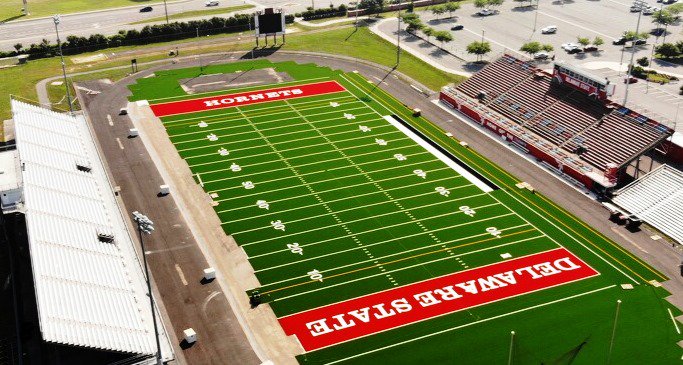Texas H.S. Football Teams To Have Fewer Two-A-Days
Texas recently finished the hottest summer on record and the rules approved by the University Interscholastic League would ban the traditional two-a-day practices in the first four days of training camp, a time that athletic trainers consider critical for allowing athletes to adjust to working out in the summer heat.
Teams could still have a second “walk-through” practice that does not include contact or conditioning during those first four days.
Other changes approved by the UIL’s Legislative Council include banning teams from holding two-a-day practices on consecutive days. And on days when teams practice twice, players must be given at least a two-hour break between workouts. Current rules require only one hour.
The changes must still be given final approval by state Education Commissioner Robert Scott, but he is expected to accept the UIL’s recommendations.
Midland High head football coach Craig Yenzer said that having Hondo Schneider on the staff as a trainer helped to keep him up to date on what was going on, and Yenzer added it was not much of a surprise to see the changes approved. Schneider is also a member of the UIL’s Medical Advisory Board.
Yenzer added that the UIL allowing coaches to oversee summer weight programs will help to monitor how in shape players are when they come in in August.
“The reason we don’t do pads for the first four days is for conditioning. Now we’re limiting the amount of conditioning we can do,” Yenzer said. “But if it helps with the health of kids, how can you argue with it?
“My concern always used to be that you couldn’t have contact with the kids from the time school let out until August. That changed some now that the UIL allows us to oversee our summer weight programs. I thought most of our kids coming in were in really good condition this season because they have conditioned themselves so well in the weight room. That’s another way for us to look at this and we probably need to get our kids more involved with the summer weight programs.”
Added Lee coach James Morton: “If everybody’s on the same playing field I guess that’s what it is and what they feel like they need to do. It goes back to (if) the people that are abusing (two-a-days) are not taking care of what they’re doing with their practice schedules then you force other people to have to step in and manage your business, I think. I think we had a pretty good setup with it, but in a way it’s kind of … personally, it’s kind of a sad deal too because so many years growing up you basically had it one way … it’s just a little bit different.”
The NFL recently banned two-a-day practices under its new collective bargaining agreement and many colleges have scaled back multiple-practice days in recent years.
Mike Carroll, head athletic trainer and assistant athletic director at Stephenville High School and a member of the National Athletic Trainers Association, said the changes will give Texas some of the strongest policies in the country regarding athlete safety and heat conditioning.
Research shows most heat-related injuries happen in the first week of practice during the second workout of the day, Carroll said. By limiting two-a-day practices and forcing players to sit out at least two hours between workouts gives their bodies time to recover, he said.
Allowing the second “walk-through” workouts where players can wear helmets but not pads was important for schools in the smaller classifications, said D.W. Rutledge, executive director of the Texas High School Coaches Association.
Texas allows schools in Class 4A and 5A, the state’s schools, to have spring workout. Classes 1A, 2A and 3A do not and the coaches at those schools said they needed more time with their players.
“This still gives them a chance to do a lot of teaching without physical contact;” Rutledge said.
Making the changes mandatory instead of just recommended guidelines was important, Carroll said.
Texas had the hottest summer on record in the United States this year, according to the National Weather Service, and averaged 86.8 degrees from June through August.
When football training camp began, much of the state was under an excessive heat warning with temperatures hitting a scorching 110 degrees in some areas.
The UIL had been considering making practice changes for several years but the heat wave “was part of the equation” in making them now, UIL Athletic Director Mark Cousins said.
Morton said the biggest things coaches and trainers have to be concerned about is the health of their players, especially early in the season.
“There’s been some cases where it’s been exposed that it’s been detrimental to the kids,” Morton said. “I think the No. 1 thing that you always have to do is take care of the health and the safety of your players — that’s got to be paramount. If there’s something that we’re not doing and we need to do that then yes (it’s good for the kids), but to me, that’s kind of always part of the grind that you have to get after and go with.”







